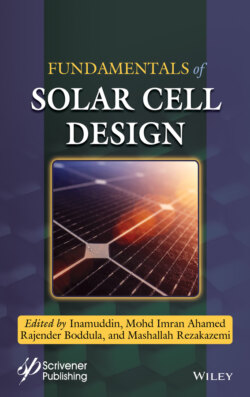Читать книгу Fundamentals of Solar Cell Design - Rajender Boddula - Страница 38
2.4 Advancements in Plasmonic Solar Cells
ОглавлениеNanotechnology has huge impact on producing efficient energy conversion devices due to its ability to develop novel materials. There are many experimental reports that confirm the enhancement in light absorption and efficiency because of light scattering from metal nanoparticles in plasmonic solar cells. The plasmonic nanostructures utilize the incident photons with multiple energy values and decrease the loss of photon energies. Researchers are finding the best way to use maximum incident photons for more absorption and high efficiency. The plasmonic solar cells are classified mainly into two categories as direct plasmonic and plasmonicenhanced solar PV cells [44, 45]. The schematic representation of various plasmonic solar cells is shown in Figures 2.6a (direct plasmonic solar cell) and 2.6b and 2.6c (plasmonic-enhanced solar cells). The efficiency for various plasmonic solar cell technologies is given in Figure 2.7. The various plasmonic solar cells and its efficiencies are summarized in Table 2.3.
Figure 2.5 Bandgap energy vs. λmax curve for various material used in solar cells. The values of this curve that are mentioned correspond to Table 2.2.
